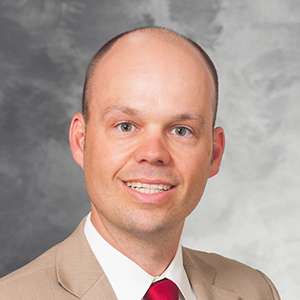 Congratulations to Assistant Professor Paul Laeseke, MD, PhD for receiving a Sponsored Research Agreement from HistoSonics, Inc for $85, 675. In addition to the funds, the agreement includes a commitment to place a histotripsy system, a significant piece of capital equipment, here at UW for the research project. UW will be one of only a few sites to have the system.
Congratulations to Assistant Professor Paul Laeseke, MD, PhD for receiving a Sponsored Research Agreement from HistoSonics, Inc for $85, 675. In addition to the funds, the agreement includes a commitment to place a histotripsy system, a significant piece of capital equipment, here at UW for the research project. UW will be one of only a few sites to have the system.
Histotripsy is a noninvasive, nonionizing and nonthermal method for destroying tissue at the cellular or subcellular level. Dr. Laeseke and other members of the UW Tumor Ablation Laboratory have been working with HistoSonics to improve the company’s histotripsy device so it will be more conducive to treat and locally control tumors in human patients.
“The preclinical and early clinical results are promising. In its current form, a diagnostic transducer is used to localize and target the tumor, monitor the treatment, and assess the treatment zone. However, there are many patients with tumors that are not well visualized on ultrasound due to body habitus or intervening ribs, bowel, etc. Those patients could not currently be treated with histotripsy. We are working to develop a new C-arm (x-ray) based targeting technique for histotripsy, which will complement the current ultrasound technique,” says Dr. Laeseke.
“The dual capabilities of a C-arm (x-ray fluoroscopy and cone-beam CT) allow us to (1) visualize the target tumor and surrounding patient anatomy and (2) monitor the 3D position and orientation of the therapy transducer in space. Combining those allows us to accurately estimate the location of the treatment effect relative to the patient and tumor. This would allow us to target and treat tumors that are not visualized on ultrasound, thereby greatly expanding the number of patients eligible for the treatment. A C-arm also brings in additional capabilities and is well-suited for guiding histotripsy procedures from beginning to end in one setting. For example, we can model respiratory motion compensate for it and we can assess the final treatment zone in 3D. Ultimately, we think C-arm guided histotripsy could be planned and delivered similar to how radiation therapy is currently performed,” Dr. Laeseke explains.
The funding from HistoSonics has allowed the researchers to gather strong preliminary data while they work to secure a larger grant. “My Co-PI, Martin Wagner (Senior Scientist in Medical Physics) and I were extremely excited to get the award from HistoSonics. We both believe that this project has a lot of promise and the funds from HistoSonics will serve as a much needed runway for us to make progress while we work to secure a larger NIH grant. We are fortunate to now have a dedicated histotripsy system here in the lab and this has allowed us to already make considerable progress in the development of our targeting techniques,” says Dr. Laeseke.